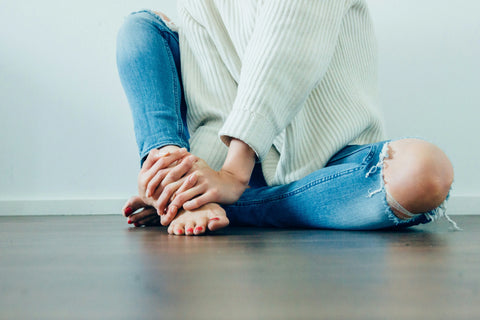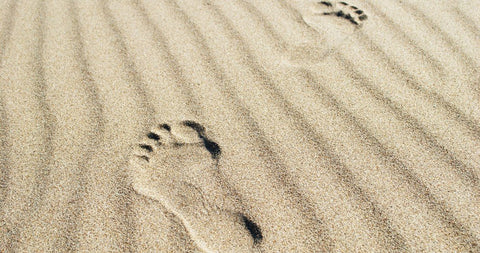
Knee pain and foot support: a connection to consider
If you’re suffering from knee pain and aren’t sure of the cause, it’s worth considering the possibility that your feet may hold a clue – and even a potential solution.
Common causes of knee pain
There are many different causes of knee pain. Some may be easy to pinpoint, such as a strain or sprain after vigorous exercise, and others may be a little trickier. For example, issues like gout, bursitis or osteoarthritis are not as easy to diagnose. If you’re suffering from knee pain, consulting a health professional to find out the cause is an important first step.
Knee pain caused by injury can present in a few distinct ways. If you tear a ligament or damage cartilage, you may hear a popping sound or find that you’re unable to stand or bear weight on the affected leg. Sprains often occur after overuse or stretching, while tendonitis normally presents as a pain between your kneecap and shin. Tendonitis is often caused by repetitive running or jumping.
If you have knee pain that hasn’t been caused by injury or excessive exercising, then it’s worth getting the second opinion of a doctor or podiatrist. Why might a podiatrist be able to help? Because there can be a connection between our feet and anterior knee pain (AKN).
The connection between knee pain and your feet
Whether we’re standing, walking or running, it’s our feet that are in contact with the ground and their positioning can have an effect that is felt throughout the body. There are some conditions, such as pes planus, that mean your feet aren’t able to support the rest of your body in the way they should – and this has the potential to cause knee pain.
Pes planus
Also often referred to as fallen arches, pes planus is a common condition where feet have very low arches that appear close to the ground. If you look at the inner side of your feet when standing and they appear flat, you may have pes planus. It’s this appearance that gives the condition another one of its popular names, “flat foot”.
When you have fallen arches, you may notice some pain in your foot, ankles or even your knees. Knee pain can occur when your feet are unable to support your body weight correctly, causing misalignment. This misalignment can continue up to your knees, hips or even back. When your knees aren’t correctly aligned, your kneecap may not be able to freely move up and down in the way it should when you’re walking or running. This can cause wear to cartilage that in turn can result in pain.
Overpronation
Another issue that can be connected to pes planus is overpronation, which is when your foot rolls inwards when you take a step forwards. This happens because the outer edge of your heel is hitting the ground first and your foot is then rolling in and over your arch.
Common symptoms of overpronation are knee, hip, back, heel or arch pain. Over time, overpronation can put strain on your muscles and increase the risk of certain injuries.
How to support your feet
There are a few important ways you can support your feet to help alleviate problems caused by pes planus or overpronation. These include:
Making sure your shoes fit well. Ill-fitting shoes often don’t offer your feet the support they need. Podiatrists recommend that you have shoes fitted properly when you buy a new pair. It’s especially important to remember that feet can gradually change shape over time and that shoes that were once a good fit may not always be.
Making use of insoles and orthotics. Insoles that are placed inside your shoes can also offer support. Our Everyday Knee to Heel Pain Relief Insoles are In-Balance insoles that are designed to help stabilise the position of your feet to support your natural walking style. Our Knee to Heel insoles have been clinically proven to offer pressure relief and structured arch support.
Try stretches and exercises. There are some stretches and exercises that can strengthen your muscles and help you improve your gait as a way to relieve knee pain. However, it’s important that you get professional advice about the stretches that are suitable for you, especially if there’s a chance your flat feet or overpronation may be caused by hypermobility.
Look after your feet
Looking after your feet can help keep your natural walking and standing positions in alignment. Seek advice from a podiatrist or doctor if you’re worried about knee pain and be sure to support your gait with well-fitting shoes and insoles. Our Everyday Knee to Heel Pain Relief Insoles come in a variety of sizes, you so can choose large, medium or small insoles.
